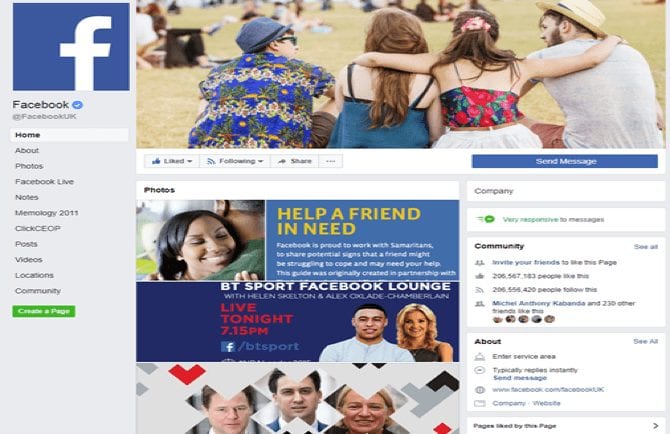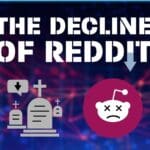What are the benefits of Facebook and is there a business case for Facebook in 2018? How should B2B and B2C businesses optimise Facebook as a marketing tool, how does it compare to other social media platforms and does Facebook generate a positive ROI for businesses? If you’re thinking about investing in a marketing campaign for Facebook, then these are no doubt questions that you’ve asked yourself. Want to know the answers? Read on below.
What is Facebook?
- 1 What is Facebook?
- 2 Facebook user statistics
- 3 Facebook for Business: A business case for Facebook
- 4 The difference between B2B and B2C marketing on Facebook
- 5 Integrating Facebook with other social media channels
- 6 Optimising Facebook for SEO
- 7 Facebook for business: ROI potential
- 8 Opace customer Facebook examples
- 9 Including Facebook within your wider marketing strategy
- 10 Contacting Opace

Does anybody not recognise the Facebook logo in 2018?
To start with the basics, Facebook is a social media platform where users can easily connect and share with one another online. Users can engage with each other in the form of posting videos or photographs and links from the web, commenting on posts, playing games and chatting live. Each user has their own personal and unique ‘wall’ and a news feed whereby they can see posts from their friends or pages they follow.
Facebook user statistics
Initially created in 2004, support for the site grew rapidly, and by December of 2006 Facebook had 12 million active users. In May of 2007 the Facebook Platform was launched, and just over a year later, the site had 131 million unique visitors in North America alone. Numbers appear to have risen exponentially since, with one billion unique users reached as of September 2012. In 2017, two billion people used the social media platform monthly, with 1.13 billion people logging on daily. The number of total users is projected to plateau in the coming years, but the number of monthly active users is reportedly going to increase as more people worldwide gain access to the web.

Facebook even use Facebook! How can you use this platform to your advantage
Facebook for Business: A business case for Facebook
The social media platform is undeniably an effective social media platform for business and does provide a good business case, but it requires time and effort to both create and maintain a page that is appealing to users. Below we explore the various benefits and drawbacks of Facebook marketing for business in 2018.
Benefits and case studies
Firstly, Facebook is an extremely low-cost marketing tool; an advert will cost a business approximately $0.25 per 1,000 impressions in 2018. The fact that no other media channel has access to over two billion people means Facebook marketing is good for businesses aiming to attract a large audience. As well as larger businesses aiming to attract a wide audience, Facebook is also useful for businesses in 2018 which may be smaller and could, therefore, have a limited marketing budget.
Raising brand awareness
Coca Cola utilised Facebook’s huge audience in order to increase brand awareness in South Africa in a three-month campaign that took place in 2016. Millions of people were reached across a multitude of devices, increasing the company’s individual reach by 42% using just 3.5% of its budget.

Coca Cola’s famous logo imprinted on their red bottle caps – they’ve had great success with social media
Business executives found, as a result of the campaign, that Facebook advertising was three times more cost-effective than TV advertising; this certainly shows Facebook is very good for business in 2018.
For businesses using Facebook as a marketing tool in 2018, further benefits of the social media platform can be seen through the creation of a user-friendly Facebook page that can raise brand awareness and attract customers. Information the company, the description of the service or product, and the provision of contact details will allow businesses to gain a following and help to build trust with these followers. Connecting with people and potential customers has never been easier for businesses in 2018; the user can share pictures, videos and links onto their page. This allows for others to see the service or product easily, as well as increase traffic generation to a website, helping to potentially create sales leads.
Facebook advertising
But, perhaps one of the biggest benefits of Facebook as a marketing tool for businesses, is targeted advertising. For businesses, pay-per-click advertising through Facebook can be used to generate traffic. By spending additional money, however, businesses can gain access to and use the information their followers’ pages. This can then be utilised to help target those who are of a similar demographic to existing followers, and therefore most likely to use a business’ product or service. Information including age, sex, location, education, employment status, marital status and interests can be filtered to allow businesses to tailor an advert to a specific demographic. For businesses who know their audience and aim to target their marketing strategy for that audience, they are able to create experiences specially tailored to their interests.
Red Bull is a prime example of a B2C company that has utilised their Facebook marketing campaign in 2018 to appeal specifically to their target audience. In tone with the brand image the company is trying to create, the Red Bull Facebook page posts unique content based around sporting events and an active lifestyle and regularly advertises their custom app, primarily for people involved in sports and high-impact competitions. The ROI potential of targeted advertising for business is certainly a worthy investment in 2018.
Drawbacks of Facebook advertising
There are some drawbacks for businesses using the social media platform in 2018 too. The very nature of Facebook’s communication platform means customers can publicly voice their complaints, which could, in turn, have a negative impact on sales leads.
A staggering 90% of consumers say that their buying decisions are influenced by online reviews, and so these complaints need to be handled quickly and efficiently so as for the business to not be affected. This often means that the Facebook page needs to be managed regularly, which is additional time and effort that some smaller or medium businesses may not be able to afford. In 2017, approximately half of British companies on Facebook have found themselves, victims of malicious reviews or criticisms, with one in five businesses having to spend in excess of £30,000 to control these comments.
Finally, Facebook’s news feed algorithm means users may not always see a business’s post; this can be very negative for business. Potentially several thousand stories could appear in any user’s news feed each day in 2018; Facebook’s objective is to select the most relevant and engaging stories to put in the limited number of slots that the user will scroll through. The more engaging the content, the more likely users are to come back. However, this can have a negative impact for businesses where the effort and money spent on promoting their product or service may not actually appear in a user’s news feed if the Facebook algorithm decides not to choose them.
The difference between B2B and B2C marketing on Facebook
There are subtle differences between B2B and B2C marketing on Facebook in 2018. Whether you are involved in B2B or B2C marketing, you will always want to create engaging content that grabs your audiences’ attention and helps to establish a relationship. However, because consumers and businesses are motivated by different things, the marketing strategies from B2B and B2C businesses will often be different. Consumers will often be drawn to style, status and entertainment. As a result, B2C marketers should tend to focus on eye-catching content that appeals to the needs of the consumer; something that is light-hearted and vibrant and describes the key benefits of the product or service.
On the contrary, B2B businesses will tend to focus on the logic of the product or service, often wanting to read the gritty information. Because of this, B2B marketing tends to be more informative and professional, helping to increase brand awareness.
With this in mind, B2B businesses tend to be disappointed with their performance on Facebook – only36% of B2B businesses found it to be effective in helping them achieve their aims. B2C businesses, however, found Facebook to be rather more effective, with 71% of businesses stating that their performance on Facebook was successful. The ROI of Facebook in 2018, therefore, appears to be greater for B2C businesses rather than B2B businesses.
For businesses wishing to diversify their fan-base and marketing strategy as much as possible, involving multiple social media channels is the way to do it in 2018. The integration of Facebook to YouTube, Instagram, Twitter and LinkedIn for businesses can be extremely easy, with methods being discussed below. Remember, the ROI for businesses on Facebook will be much greater when integrated with various other social media platforms!

Use Facebook standalone or for maximum success integrate with other social media tools
YouTube, Vimeo and other video networks
The very nature of YouTube and Vimeo, along with other video channels and video-sharing sites, means that businesses are uploading videos rather than posts containing words or pictures, although a small amount of text can be included in the description boxes. Videos can be downloaded from Facebook using third-party websites, which extract download links from the Facebook website. Once the video has been downloaded, it can be successfully uploaded on a Vimeo or YouTube channel.
Similarly, videos can easily be embedded from YouTube or Vimeo into a Facebook post to make the content more engaging. The user can also integrate their Facebook and YouTube pages through a third-party Facebook app, YouTube for Pages. The app automatically posts videos shared through your YouTube channel onto your Facebook page, allowing for content to reach a wider audience far more quickly than if it were to be done manually, proving to be beneficial for many businesses.
Integrating Facebook and Twitter
The integration of Facebook and Twitter can prove fruitful for business as these two social media channels, between them, have a huge following. The integration of these channels can be done by accessing the settings tab of the Twitter account a business wishes to associate with its profile. By clicking connect to Facebook, each Tweet will be automatically uploaded to its Facebook page.
However, prior to this integration, a business must ask themselves whether this is a suitable marketing strategy. The very nature of Twitter is to post short, succinct and to-the-point pieces of information a regular basis to reach the masses. If the B2B or B2C company is a heavy ‘Tweeter’, its fans may not appreciate seeing regular Tweets littering their Facebook news feeds and may ‘unlike’ the Facebook page if the company is too prolific. If this could potentially be an issue for business, Selective Twitter is the manual process of posting individual Tweets to Facebook. Follow the step-by-step instructions summarised in this article.
Integrating Facebook with Instagram and Flickr
In 2018, Instagram and Flickr’s basic and user-friendly homepages are now more simple than ever, meaning that Facebook content shared to these platforms can be a useful marketing strategy for a business.
The user primarily relies on the aesthetic value of a post to appeal to users of these image-based social media platforms. Therefore, if the right content is uploaded, a business can market themselves well through the integration of these channels. For businesses going to the effort of posting a picture or photo to Facebook, why not go the extra mile and upload it to Instagram and Flickr too?
Instagram, owned by Facebook after it was bought for the value of $1 billion in 2012, now boasts staggering 800 million monthly active users as of September 2017. Approximately 33% of marketers plan to add this content distribution channel to their marketing strategy within the next year. Investing time to integrate Facebook and Instagram in 2018 is, therefore, both beneficial for business, as well as extremely easy, and can help to increase your ROI.
Adding Instagram can be done by simply clicking on the settings tab represented by a cog on a user’s Instagram profile. The user can link its account with a Facebook profile, with any posts shared on Instagram automatically shared on Facebook thereafter. The process of linking your Flickr account with Facebook is similar and is done through the “Your Account” tab. Sharing posts from Facebook to Instagram and Flickr must be done manually, through saving the photos or videos and then uploading them to an Instagram or Flickr account.
Integrating Facebook with LinkedIn
Combining the professionalism of LinkedIn with the social features of Facebook allows for businesses to reap the benefits from these two rather different social media channels. In a survey conducted in 2018, LinkedIn was voted as the best and most successful platform among B2B marketers and it was also found to be relatively successful among B2C marketers.
It, therefore, goes without saying that LinkedIn provides a good business case and is a valuable way for business owners to keep up to date with their customers and peers. Integrating these two social media platforms is explained in this handy article by Beth Barlett. For businesses wishing to expand their professional network in 2018, follow these simple steps.
Optimising Facebook for SEO
There are various ways for businesses to optimise Facebook for SEO in 2018 and time should be taken to ensure your business has used these SEO techniques.
- Choose the best name possible for your Facebook page: Avoid cramming too many words into your title as coming across too spammy may harm your viral growth if users and followers aren’t engaging with your page. The first word within your Facebook page title is given the most importance by Google, so try to make this as relevant to your business as possible.
- Use keywords throughout your page: Keyword optimisation is the most important form of SEO and search engines are drawn to these keywords, so try to include them wherever possible, without appearing too spammy! Make use of keywords where relevant and try to avoid using them excessively as this may be unappealing to followers and bad for business. The key is to just write naturally
- Post regular updates in the form of pictures, videos, discussion forums or events: For businesses, posting interesting updates on a regular basis to keep their followers engaged with the product or service is vital. Posting updates that include keywords in the descriptive field will be ranked higher in search engines, again increasing your SEO in 2018.
Facebook for business: ROI potential
There is a difficulty in analysing the ROI of a social media platform for business because it can be measured in various ways, not just in the form of revenue generated from each click. For Facebook, these returns may also be in the form of leads, traffic generation and customer testimonials. Listed below are just some of the possible ROIs of a business page on Facebook in 2018.
- Sharing: Followers of your page liking, sharing or commenting on posts show up in their friend’s news feeds, introducing your business to a wider array of people who may potentially start to follow the page. Furthermore, people are interested in what their friends think and do, and so a personal touch is added to a product or service if a follower’s friend sees they are enjoying what a business is offering.
In support of this, a Forrester Research report found that 70% of online adults in the US trust brand or product recommendations from friends and family. The same report found that only 46% trust online reviews written by customers. These figures indicate that followers engaging with your company through Facebook can have a large ROI in 2018, which can be hugely beneficial for business.
- Referral Traffic: By linking your site to a Facebook post, the traffic to your site through referrals will undoubtedly increase. However, customers are unlikely to engage with a post and click on the associated link if the post is just about what’s on sale – it’s boring! Referral traffic is a huge ROI of Facebook for business if the user posts interesting, engaging content that offers followers ways to solve problems and improve their lives as a result of using a product or service. A business blatantly trying to sell a product may be off-putting for followers, so try to avoid this at all costs.
- Understanding your customers and sales leads: As previously mentioned in the Benefits of Facebook for Business in 2018 section, a user can pay to access a follower’s information to aid with targeting a specific demographic in future advert campaigns to drive sales leads. By understanding its customers, a business can adapt its marketing strategy and product line, helping to create sales leads in the process. Once a business knows and understands its customers, it can advertise especially for this demographic, which will undeniably help with the ROI of Facebook in 2018.
Opace customer Facebook examples
When comparing the traffic generation from social media channels to the external websites of some of our clients here at Opace, it’s not surprising that Facebook fares better for B2C companies rather than B2B companies. This may be because the primary goal of B2C businesses using social media is to drive community engagement and involvement. For example, one of our clients found that 47% of its traffic came from Facebook, while another found a staggering 86% of its traffic came from Facebook. These figures were 26% and 79% greater than the traffic from the next social media channel, respectively.
Our data shows that there are cases of B2B companies faring extremely well on Facebook as well. One of our clients found that 35% of their traffic came through Facebook, a figure which was 8% higher than the channel which had the second highest traffic generation. Another B2B client found that 43% of its traffic came from Facebook, just 1% lower than LinkedIn, typically seen as a much better social media platform for B2B marketing.
Including Facebook within your wider marketing strategy
In 2018, this social media platform has access to over two billion people, and so there is undoubtedly a business case for Facebook. A user-friendly platform which offers low-cost advertising and allows for businesses to target their advert campaigns towards specific demographics shows the ROI potential of the media channel in 2018.
Although a seemingly brilliant social media platform for businesses, there are criticisms towards Facebook as a marketing tool in 2018. These include the time and effort needed to produce and maintain a successful page, as well as the extremely public nature of Facebook. This means complaints by customers can be viewed by others easily, which could potentially lead to bad press.
Due to the user-friendly and aesthetic aspect of Facebook, as a marketing tool, it is preferred by B2C businesses, as shown by the 71% surveyed in 2017 who found their Facebook marketing campaigns to be successful. Furthermore, the integration of Facebook with various other social media channels in 2018 is extremely easy and should be done to allow for a business to diversify and connect with a wider audience.
Despite the drawbacks that Facebook does have, ultimately, it’s an easy-to-use platform and with such a huge audience it has been a defining marketing tool in the growth of businesses around the world. Both B2B and B2C businesses should be sure to integrate Facebook into their marketing strategy in 2018, and the years that follow too.
Contacting Opace
So, what are you waiting for? Why not call Opace today on 0121 222 5757 to discuss your Facebook marketing strategy moving forward. Call us now or visit our contact form for an early reply.
Image Credits: TheDigitalArtist, geralt, Facebook, Couleur

![Seo content creation guide for good content - why good content matters: seo content creation guidelines [updated] Seo content creation guidelines for good content](https://www.opace.co.uk/wp-content/uploads/2024/03/SEO-content-creation-guide-for-good-content-150x150.jpeg)




0 Comments